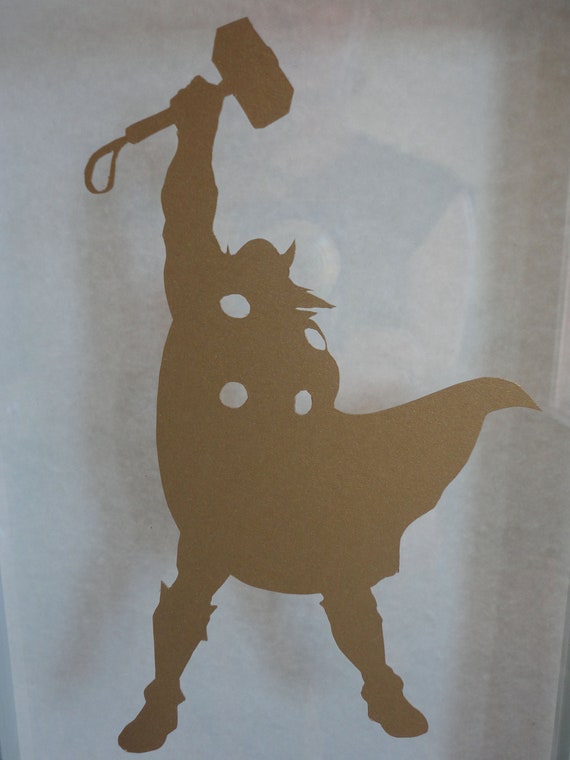Bryce Canyon National Park has filled
me with awe and wonder, with its natural ampitheatre and
hoodoos—sometimes they look like the turrets of an epic castle,
striated in orange and white; sometimes like an army of stone
soldiers, standing tall and in formation. In Pauite legend, they are
people turned to stone by coyote for their evil deeds. In geology,
they are the result of erosion of the Claron Limestone, primarily
water that percolates then freezes (frost-wedging.)
Not surprisingly, I became fixated on
Thor's hammer, and wielded my brushes and brush pens and oil pastels
to produce a few drawings. Yes, nature meets culture here for me,
being that I thrilled to the adventures of the thunder god
(especially Marvel's rendition) in my young days and my older ones.
How appropriate that the first Thor comics epic I read was “The Flame, The Frost, and The Fury!” (issue #425, by Tom DeFalco and Ron Frenz) wherein the thunderer
battles Sutur the Flame Demon and Ymir the Frost Giant to avert
Ragnarok (the Norse apocalypse.) Plenty of flame, frost, and fury has
shaped the landscape of Bryce Canyon!
After bouts of drawing and hiking, I
visited the Visitor Center, to discover Thor's hammer emblazoned on
various post cards and posters and calendars and tote bags. The icon
of Bryce Canyon!
Most National Parks have their icons,
and normally it is some object with a very distinctive shape. At
Timpanogos Cave National Monument (where I worked last summer) that
honor belongs to the Great Heart of Timpanogos. Park visitors'
preoccupation with the Heart was sometimes a source of frustration
for some of my fellow rangers, because although the Heart is
majestic, it is a large stalactite, similar to ones found in many
other limestone caves. The truly exceptional feature of Timpanogos
Cave is its Helictites—very few other caves in the world have them
in such number and diversity. The greatest concentration of these is
found in the Chimes Chamber; they resemble worms of snakes, and their
growth seems to defy gravity. Whatever the merits of the helictites,
the Heart's iconic shape has a way of cementing itself in the
longitudinal memory of the average visitor, above all other cave
features, save the darkness (according to an informal survey.)
Iconic shapes—objects unmistakable in
silhouette—must occupy a deep and potent place within our
imaginations, perhaps even amygdalas, reinforced by millions of years
of evolution and survival. (I wrote about this previously in my
post “Silhouettes and Night Encounters.”) Religions have their
icons, such as the cross for Christians and the circle for many
American Indian belief systems. Many of the most successful
characters in comics and animated cartoons have a distinctive
shape—Batman, Wolverine, Popeye, Betty Boop, Bart Simpson, Dick Tracy, Calvin and Hobbes,
etc. These characters are unmistakable in silhouette—just like the
famed icons of the National Park system! These include the Sequoia
tree, the Bison, Old Faithful, Wizard Island, Mount Rainier, Delicate
Arch, the Three Patriarchs, etc. The park ranger in a flat hat is an iconic character
too. I strongly suspect that these ink drawings, ancient rocks, and
uniformed public servants all tap into the same deep recesses in our
brain. Outlines are all-important to how we see the world—what
camouflage does is break up an animal's outline, so they are seldom
seen. And so the recognition and memory of distinctive outlines with
certain characters or features must have been fundamental to our
survival, whether to stay away from a lurking lion or to navigate by
sun, moon, and landmarks.
And so I sat on the Navajo Loop trail, and tried
to depict every crag and crust and ridge of Thor's hammer, my hands
caked in ink and graphite, my jeans covered in gray limey soil. The
clouds moved past in the deep blue sky behind the red rocks. Tourists
came by, most photographed the hammer, and some photographed me at
work as well. To me, the hammer meant power and dominion over the sky
and storms. I couldn't help but imagine the sky turned to black, and
lighting blasts sent from the hammer, to blast away flying saucer
invaders to our world!
Thor (superhero) is trademarked to Marvel Comics. Low-resolution image (as designed by Myriah Hankins--unsure of original artist) is used here for educational purposes only.









